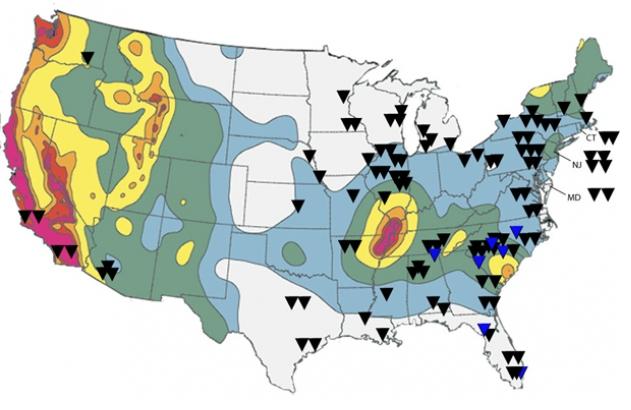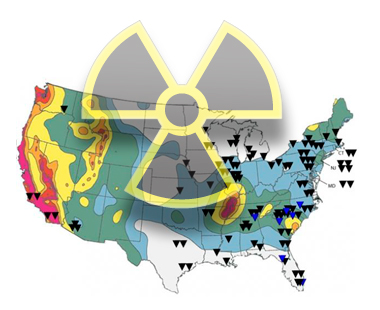This is part three in a series on the United States and nuclear power. Read parts one, two, and four.
Although Democrats and Republicans in Congress feed at the nuclear industry’s trough in equal measure, Republicans in particular have been trying hard for years to bring about a renaissance of nuclear power in the United States. If they had their druthers, 100 new nuke plants would be built during the next two decades — on top of the 104 reactors already operating. The Republicans’ battle cry is “all of the above” — a strategy that supposedly leaves out no energy option. This is pure political eyewash — a cover for a brutal agenda of more oil and gas drilling, more coal, and more nuclear power.
But the Democrats too are relatively amenable to nuclear power, including the Obama White House. President Obama has requested that Congress triple the Bush-era nuclear loan guarantees to $54.5 billion. After the Fukushima catastrophe, he came out again in favor of building new nuclear power plants. As a former senator from Illinois, he has been closely tied to Exelon, one of the biggest nuclear corporations in the U.S., since the beginning of his political career. Obama’s team of advisers is shot through with former employees of the nuclear industry: top advisers David Axelrod and Rahm Emanuel were once on the Exelon payroll, and the corporation contributed generously to Obama’s presidential campaign.
The federal bureaucracy, too, stands wholly behind nuclear power. The Nuclear Regulatory Commission (NRC) monitors compliance with safety standards and approves lifespan extensions for nuclear power plants. So far, it has not turned down a single renewal application: 62 reactors have already received approval of an extension of their 40-year lifespans to 60 years; a dozen more applications are pending. The NRC was embarrassed by an internal investigation in September 2007 which revealed that in more than 70 percent of cases, text from industry’s applications was copied verbatim into the NRC’s approvals. Nuclear experts like Michele Boyd of the Physicians for Social Responsibility had assumed that the old plants built during the 1960s and ’70s could not be approved today [PDF], but their lifespan extensions keep getting the OK. One NRC spokesperson commented, “We have a high degree of confidence that our 104 reactors have adequate protection” — despite the fact that 23 of those reactors are very similar to the Fukushima plant.
Singing another tune in the states
At the state level, things look a lot different. In a number of states, politicians and activists are fighting for early shutdown of reactors they believe to be unsafe, and corporations are deciding that new nuclear plants are just too risky.
Vermont: The state legislature wants to shut down Yankee
In Vermont, the nuclear corporation Entergy has been operating the Yankee nuclear power plant since 1972. It is one of the oldest and most accident-prone in the United States. Recently, radioactive material entered the environment through defective underground pipes — after the operator had sworn under oath that these pipes did not even exist. Due to these and other safety mishaps, the Vermont state legislature in February 2010 voted against a lifespan extension. A state law gives the legislature the power to shut down the reactor after its federal license expires in March 2012, but Vermont Yankee’s owners are fighting that law in court.
Meanwhile, the NRC approved a license extension for Yankee in a closed session the day before the Fukushima disaster. After the catastrophe, the commission was afraid to inform the public of its decision. After all, the Yankee plant is the same GE model as Fukushima I. But a few days later, the reactor was publicly given the green light for 20 more years of operation. The NRC said there was no cause to be concerned about safety. In view of the dramatic events in Japan and the history of incidents at the reactor, most politicians in Vermont continue to disagree.
New York: Gov. Cuomo wants to shut down Indian Point
The Indian Point nuclear power plant is just 42 miles from downtown Manhattan. In case of emergency, millions of people would have to be evacuated immediately — and might never be able to go back. Indian Point is also located in an earthquake-risk area, as Columbia University’s Earth Institute has warned [PDF]. An earthquake in the area in the 1880s reached 5.2 on the Richter scale, though Entergy, which operates Indian Point, reports that the plant is designed to withstand earthquakes of up to 6.1.
Gov. Andrew Cuomo (D) wants to shut down Indian Point, arguing that it poses a danger to New York City, particularly in the wake of 9/11. Originally, the NRC was to make decisions about extensions for the reactors at Indian Point in 2012 and 2015. Now, Cuomo is pressuring the agency to speed up its decision. Neither the governor nor the state legislature has the right to cancel the operator’s license; the safety check is the sole responsibility of the NRC. However, the state can impose environmental stipulations on the operation of a power plant, for instance to protect bodies of water. It’s unclear how the situation will shake out.
California: Activists go after San Onofre and Diablo Canyon plants
The nuclear lobby says that an earthquake or tsunami of Japanese proportions is unlikely in the United States, but a look at the location of nuclear power plants in earthquake risk areas shows that some of them are ticking time bombs:
 Seismic hazards and nuclear reactors: Black triangles are active reactors; blue are proposed reactors. Probability of strong shaking increases from very low (white), to moderate (blue, green, and yellow), to high (orange, pink, and red).Image: Kimberly Leonard/Center for Public Integrity
Seismic hazards and nuclear reactors: Black triangles are active reactors; blue are proposed reactors. Probability of strong shaking increases from very low (white), to moderate (blue, green, and yellow), to high (orange, pink, and red).Image: Kimberly Leonard/Center for Public Integrity
The two nuclear plants at highest risk from earthquakes are in California: the Diablo Canyon plant, near an offshore fault, and the San Onofre plant, halfway between Southern California’s two huge metropolitan areas, Los Angeles and San Diego. More than 7 million people live within a 50-mile radius of San Onofre — many more than around the Fukushima plant. Three very active faultlines are located 20, 40, and 55 miles away, including the notorious San Andreas fault.
Just two weeks before the Japanese tsunami, 10 California Congress members warned the Department of Energy that both nuclear power plants in their state were more seriously threatened by earthquakes than had previously been assumed. The San Onofre plant in particular is vulnerable to earthquakes and tsunamis — contrary to the claims of its operator. And Diablo Canyon doesn’t even have an earthquake emergency response plan; the NRC didn’t require one when it went online in the mid-‘80s. Republican State Senator Sam Blakeslee, a geophysicist who specializes in earthquake research, has warned about the “seismic uncertainty surrounding California’s nuclear power plants.”
Anti-nuke activists in California believe they have the momentum to force an early shutdown of San Onofre and Diablo Canyon. They may get support from Gov. Jerry Brown (D), a great fan of renewable energy. But the NRC still calls the shots.
Maryland and Texas: New construction plans abandoned
One would think the billions in federal loan guarantees promised by Obama would be enough to breathe life into a nuclear revival, but not so far. One case in point is the planned new reactor at Calvert Cliffs, Md., which is facing cancellation. The investor, Constellation, pulled the plug on the contract last October, proclaiming the settlement fee for the federal guarantee of $7.6 billion was too expensive. That decision was rewarded on Wall Street: Constellation’s stock went up when the cancellation was announced.
After the Fukushima disaster, NRG Energy Inc. cancelled its plans for a reactor in South Texas, saying it had become “impossible for us to justify to our shareholders any further financial participation.”
Next: “Is pro-nuke enthusiasm in the U.S. waning?“


